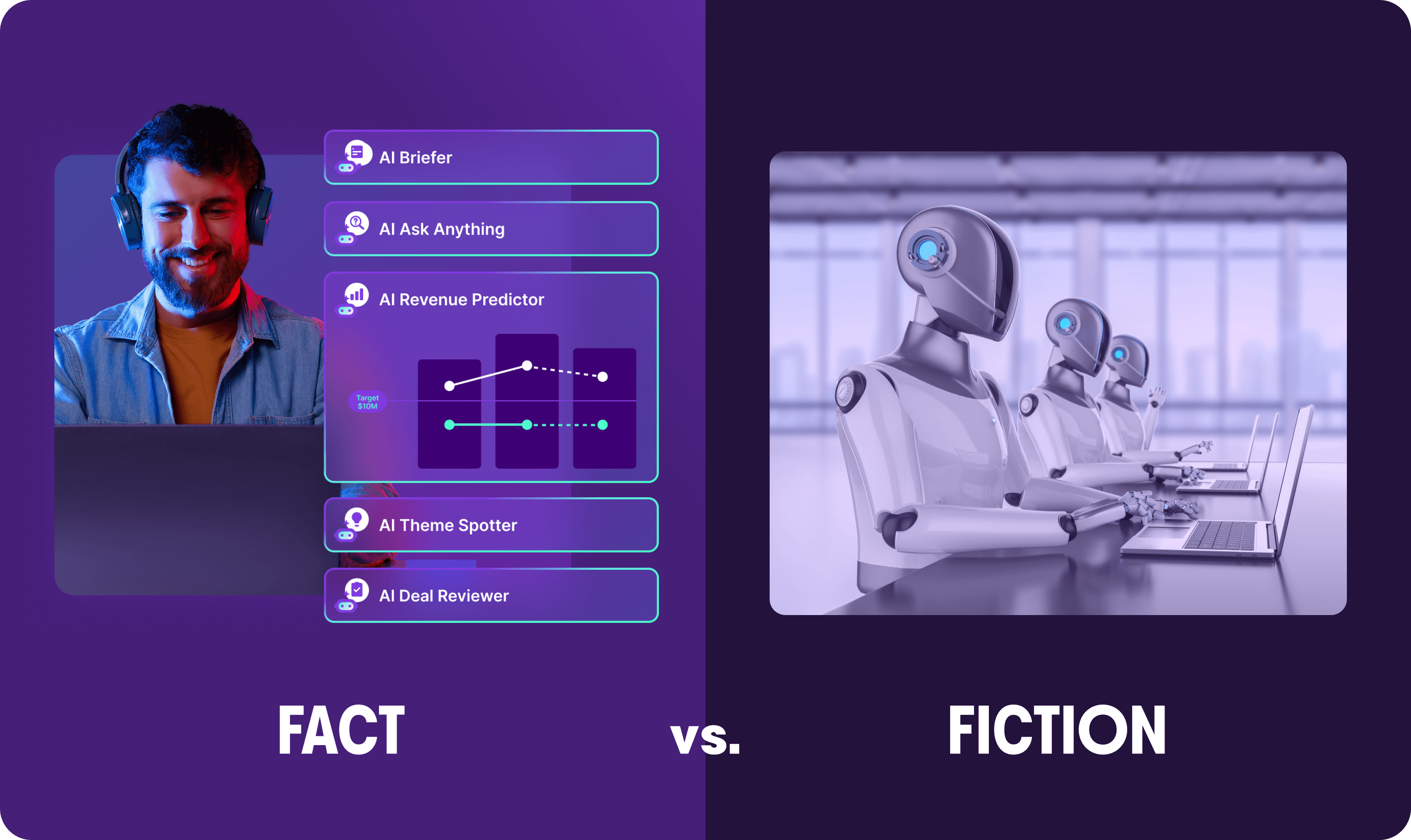Sales strategies
What To Know About Sales Efficiency: Metrics, How to Improve It, and More

Jonathan Costet
Content Author
Published on: October 3, 2022
It doesn’t matter if you are a Formula 1 engineer, an Olympic sprinter, or a sales manager; everyone is striving for efficiency.
More efficient race cars are lighter and require less fuel, more efficient sprinters can run faster with less effort, and more efficient sales teams can close more and higher-value deals with fewer resources.
But unlike the other two examples, sales managers aren’t usually backed by multi-million dollar teams supplying them with insights to drive improvements. They have to go out and get their own.
Luckily, calculating your team’s sales efficiency is easier than you think. One little formula is all you need.
Below, we’ll reveal what that formula is, why it’s important, how you can improve sales efficiency, and more.
What is sales efficiency?
Sales efficiency means driving the most sales possible from the resources at your disposal. In other words, the more sales you make with fewer resources, the more efficient you are.
So your team can become more efficient by making more sales with the same amount of resources. They can also become more efficient by making the same amount of sales with fewer resources. They become less efficient if more resources are required to make the same sales or if their sales numbers fall off without you decreasing resources.
Calculating sales efficiency (also known as the Magic Number) is easier than most people think. Simply divide the sales revenue by the cost of making those sales to get your sales efficiency ratio.
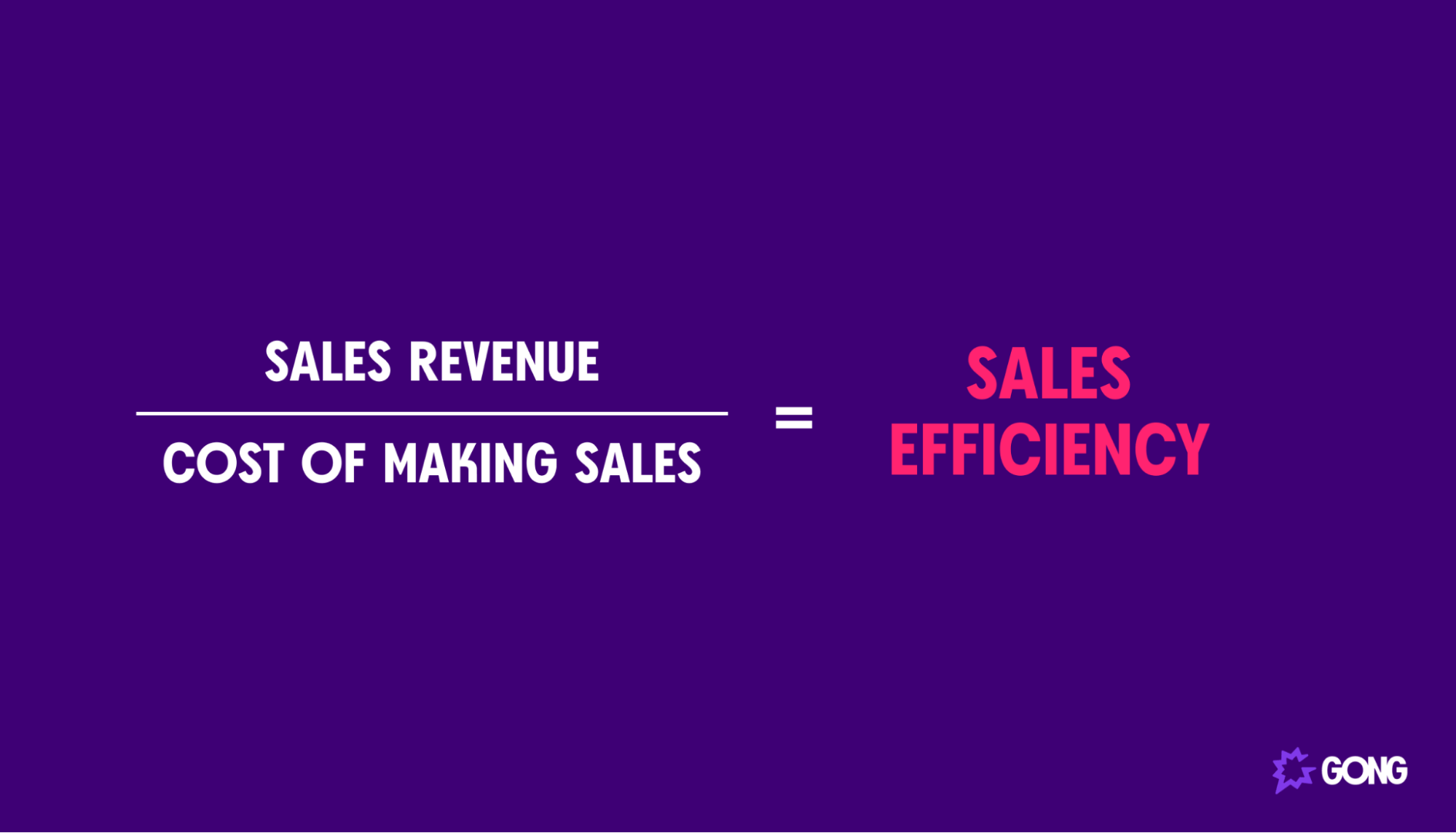
So if your team drove $2 million in revenue over the last quarter and the costs of those sales totaled $1 million, you’have a sales efficiency ratio of 2.
Sales revenue is easy to understand. But the costs of making a sale can be nebulous. Essentially, this is any expense (direct or indirect) your team incurs during the sales process. This includes:
- Employee costs (salary, benefits, insurance, etc.)
- Overheads (rent, energy, etc.)
- Sales software
- Employee training
You can calculate the efficiency of a single sales rep or an entire sales team. And you can calculate sales efficiency over any period. Typically, this would be a quarter or a year, but there’s no reason you can’t calculate the sales efficiency of your team from one month to the next if you have a short sales cycle.
Sales efficiency is not sales effectiveness
Sales efficiency and effectiveness are sometimes used interchangeably, but they are not the same.
We discussed above that sales efficiency measures your team’s performance with the resources they are given. The more revenue they generate relative to the cost of achieving those sales, the more efficient they are.
On the other hand, sales effectiveness measures your team’s ability to convert prospects throughout the buyer’s journey. Looking at the image below, effective sales teams will have more wins than losses at each sales pipeline stage. Ineffective sales teams will lose more buyers than they convert.
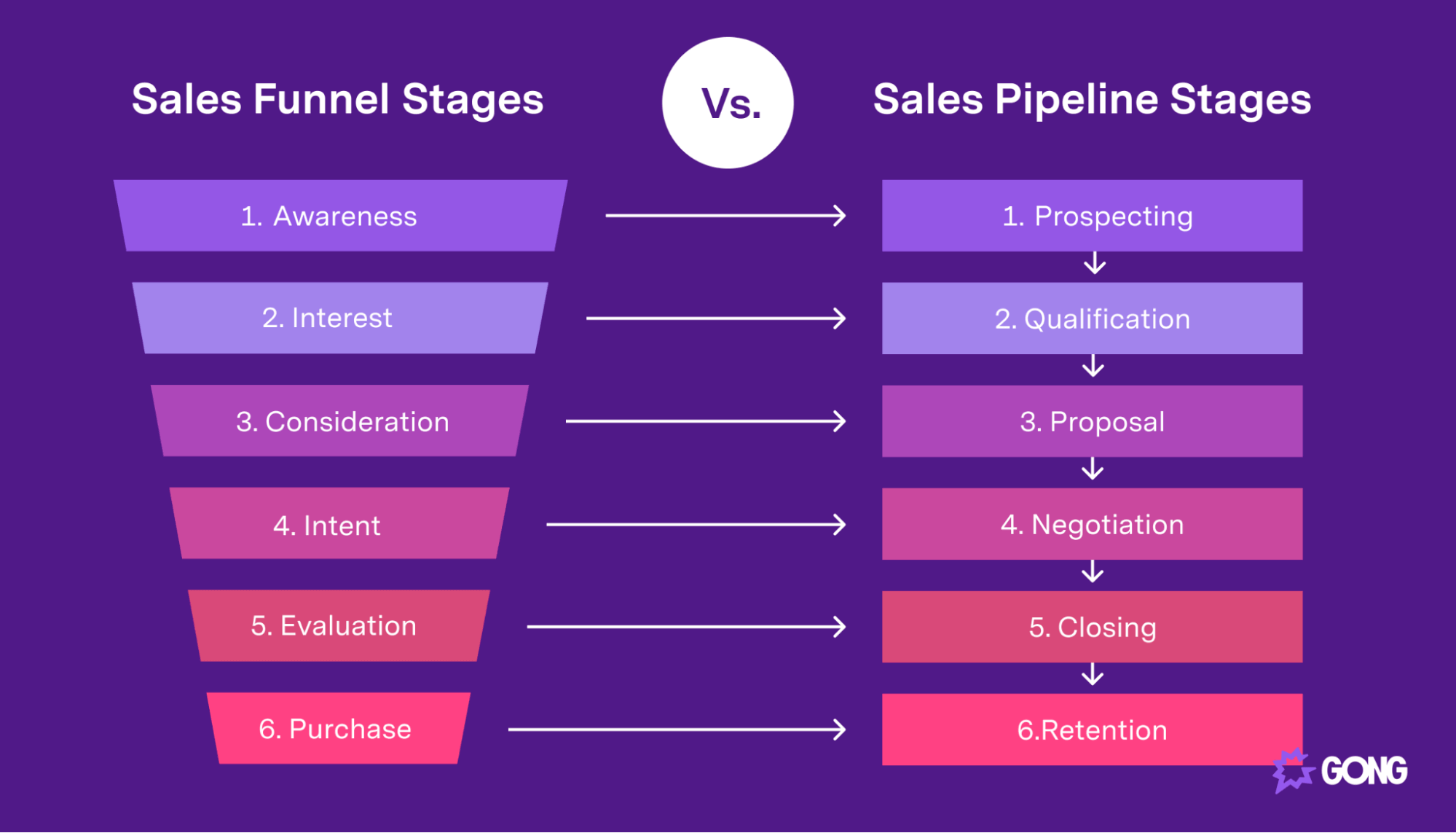
Rather than strive for one or the other, sales managers should be looking to build an efficientandeffective sales process.
What is a good sales efficiency ratio?
You’ve gathered your revenue and expense figures. You’ve run them through the sales efficiency formula, and you’ve got your ratio. But how do you know if it’s any good?
Let’s start by defining a bad sales efficiency ratio. That’s any ratio lower than 1. If you have a sales efficiency ratio less than 1, you’re spending more to generate sales than those sales bring in. That may not be an issue in the short term. But unless something changes, it means your sales and marketing practices aren’t sustainable.
A ratio greater than 1 means your sales and marketing teams are delivering a positive ROI. Any ratio between 1 and 3 is pretty good — and obviously, the higher, the better.
A sales efficiency ratio over 3 is exceptional. It means your sales team is extremely efficient and usually indicates you have excellent product market fit. But don’t get too carried away. Such a high sales efficiency ratio could mean you are underinvesting in sales and marketing and missing out on much more potential revenue. While every business strives for a positive ROI on marketing spend, it’s much better to have a smaller ROI and drive tens of millions of dollars in revenue than to have a larger ROI but only drive a seven-figure revenue.
Why is it important to measure sales efficiency?
Sales managers should regularly analyze sales efficiency for several reasons.
It provides a quick reflection on your sales process
Keeping track of dozens of different sales metrics and KPIs can be overwhelming. But by calculating sales efficiency, you get a quick snapshot of how your entire sales process and methodology are functioning. Few other sales metrics provide such a fundamental understanding of your company’s performance.
You won’t learn everything you need to know about the impact of your sales process by tracking sales efficiency alone, but you can use it as a yardstick for further investigation. If your sales efficiency is falling from one period to the next, you can identify which side of the equation is causing the drop and take steps to fix it.
It goes beyond targets
Just because your team makes sales and hits their quotas doesn’t mean your business is profitable. You could be spending far more on marketing, leads, tools, and wages than your reps currently bring in.
Sales efficiency shows whether your sales team is delivering a positive return on your investment. If they aren’t, you can take steps to address parts of your sales process to improve the ratio. That could be increasing your reps’ target, for example, so that they generate more revenue. Or it could be working with marketing to reduce the cost of MQLs.
It’s an indicator of profitability in software companies
If you own or lead a software company, you can use the sales efficiency formula as an indicator of profitability. That’s because the biggest cost of most SaaS companies tends to be marketing and sales. Delivering software is normally inexpensive, but acquiring new customers can be much more costly.
Prospective buyers will place even more importance on your company’s sales efficiency. Not only is it an indicator of the profitability potential of your company, but it’s also an indicator of long-term growth. An efficient sales and marketing team will position your brand for long-term success even if you aren’t generating much profit now.
Other metrics to measure sales efficiency
The sales efficiency (or magic) formula isn’t the only way to measure your team’s efficiency. You can also use these sales efficiency metrics.
LTV: CAC ratio
LTV stands for customer lifetime value, and CAC is customer acquisition cost. The ratio between them helps you understand the return your company gets for investing a dollar into sales and marketing initiatives.
So if your LTV is $10,000 and it costs $1000 to acquire each customer, you have an LTV: CAC ratio of 10:1. Or for every $1 you spend on marketing and sales, you get $10 in return. Like the sales efficiency formula, the higher the ratio, the more efficient you are.
Payback period
The payback period is the length of time it takes you to be paid back the cost of acquiring a customer. All other things being equal, the faster you are paid back, the more efficient your team is.
The payback period can be a great internal metric, but it’s not great for comparing one business to another. If customers pay a small monthly fee but remain with you for years, it can take much longer to be repaid than a company that gets paid back within three months but doesn’t make nearly as much revenue in the long run.
How to improve sales efficiency
Don’t settle for a low sales efficiency ratio. Use one or more of the strategies listed below, to make your sales team more efficient.
Improve and speed up sales training
The longer reps spend training, the longer it takes to generate revenue, and the more your entire team’s sales efficiency ratio will suffer.
We recommend creating a 30-60-90 day onboarding plan to get reps up to speed faster while decreasing your company’s turnover rate. This should be the perfect time period to get new reps selling efficiently without burning them out.
Don’t just view training as a one-off activity, though. Regular training may cost more, but it will make your reps much better sellers.
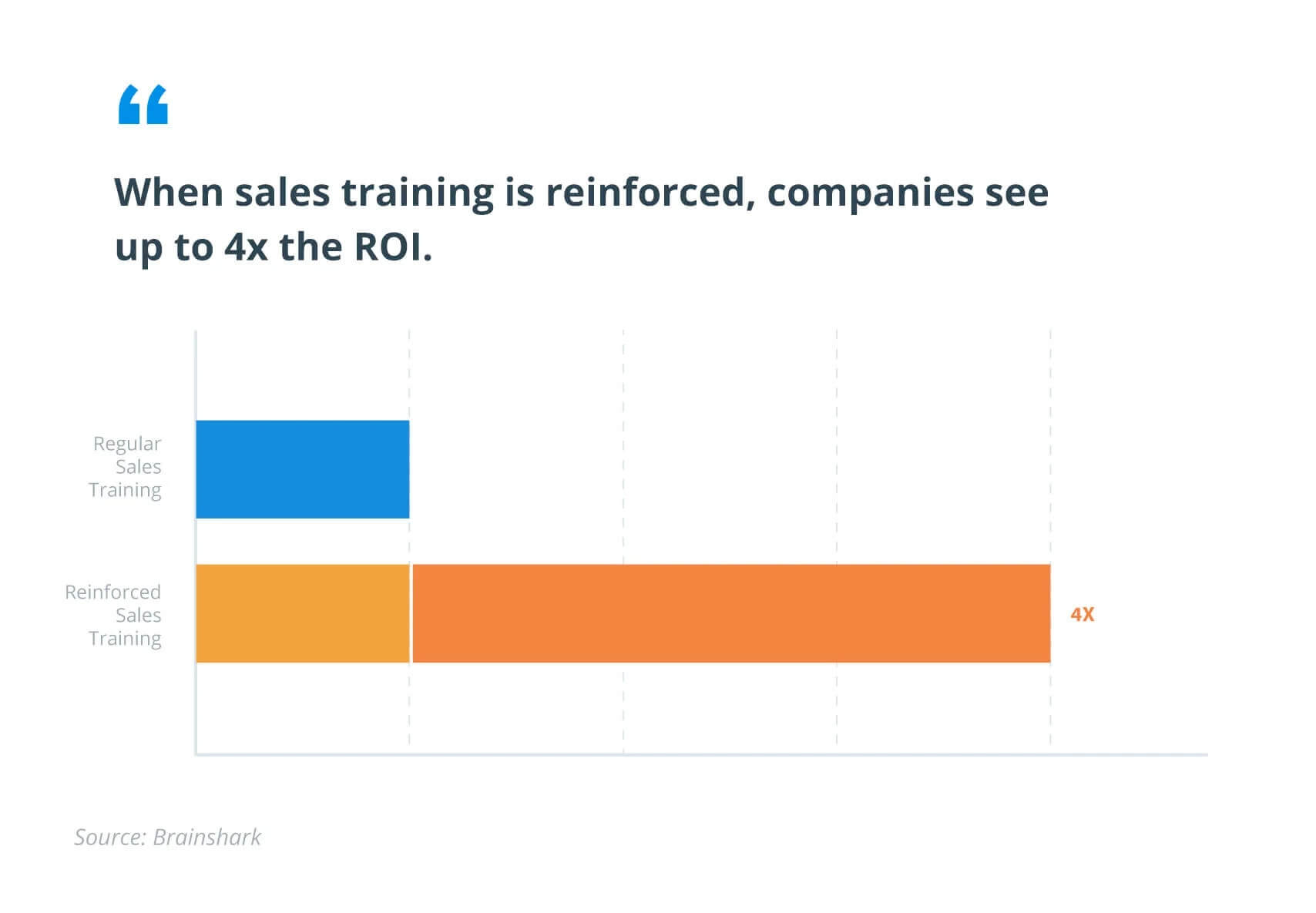
Regular, personalized sales coaching is essential to sharpen your team’s abilities. Studies show that reinforcing sales training delivers 4x the ROI.
Revisit buyer personas and ICPs
When reps clearly know who they are targeting, they can use their time more efficiently. Good buyer personas and ideal customer profiles (ICPs) make it easy for your reps to immediately target the right kind of buyer. If they clearly understand what a good prospect looks like, they shouldn’t waste time speaking to buyers who won’t be suitable.
They’ll also be better positioned to build a rapport with prospects and address their pain points. For example, a rep who knows their prospect’s key challenges can provide much more relevant examples of customer success than a competing rep who doesn’t have such an in-depth ICP.
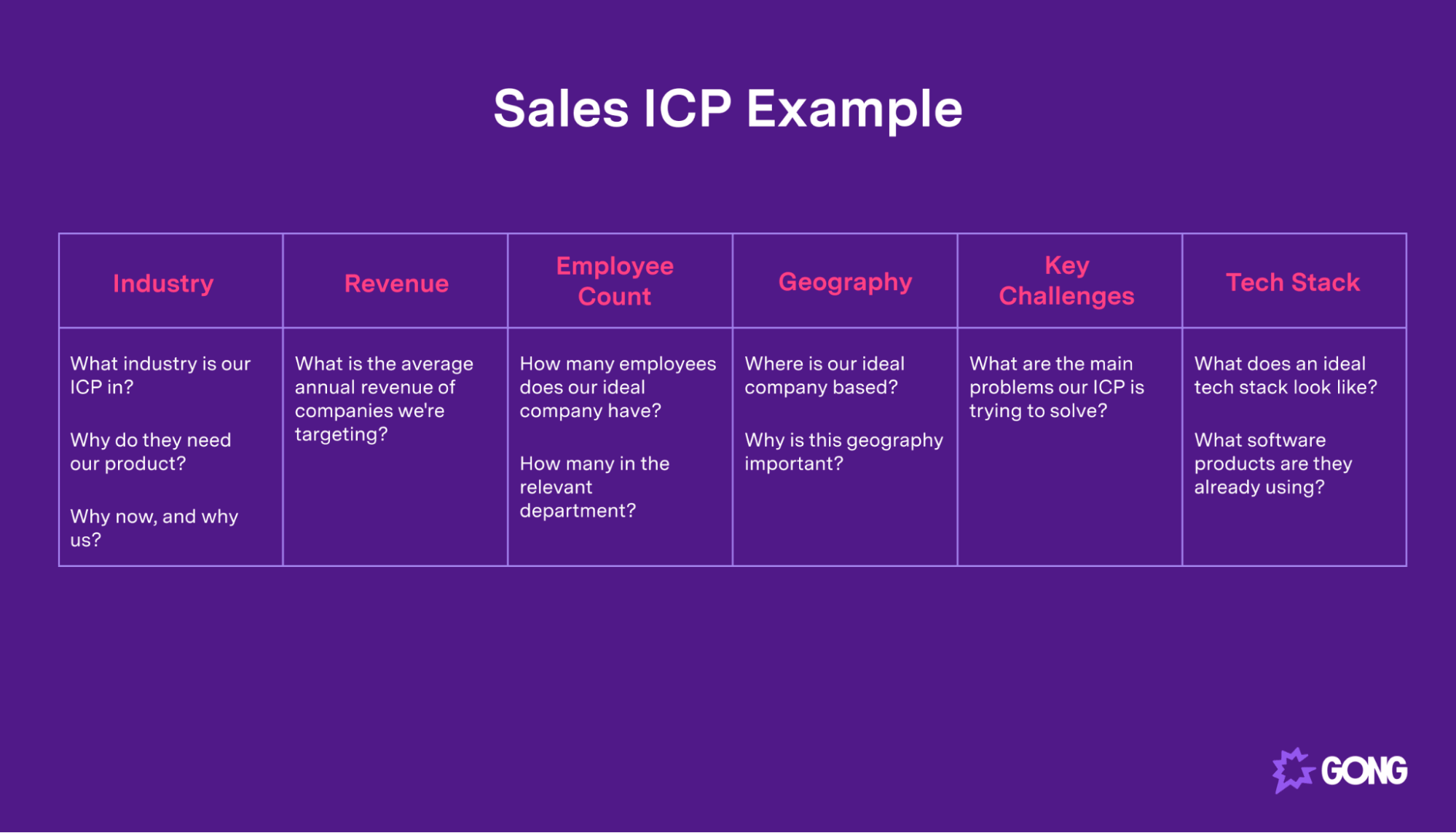
At a minimum, your ICPs are as detailed as the image above. If you can go into even more detail, do it. Your reps will thank you for it, and so will your sales efficiency ratio.
Refine your sales messaging
Take another look at your sales messaging once you’ve revisited buyer personas and ICPs. If you’ve added even more color to these tools, your sales messaging may be slightly off.
This is easily resolved when you have a good grasp of your ideal customer’s challenges and several years of sales data to analyze.
Make sure to thoroughly test new sales messages before implementing them throughout the business. One way is to use Gong to track message adoption rates all the way through the funnel. Specifically, you can compare the win rates of new messaging compared to current and historical sales messages. If your new messaging results in higher win rates, your reps should be even more efficient.
Refine your sales process
Your sales process is your team’s repeatable steps to close a deal. Good efficiency in sales requires a smooth and repeatable process. So if you don’t have one already, create one.
You can build one from scratch, or you can copy one of the successful sales methodologies below:
If you have one, look at how you can streamline it or make it more effective. The quicker you can move prospects through the buyer’s journey, the more revenue you’ll generate each quarter. For example, you could encourage your team to spend longer on demo calls to increase the number of wins .
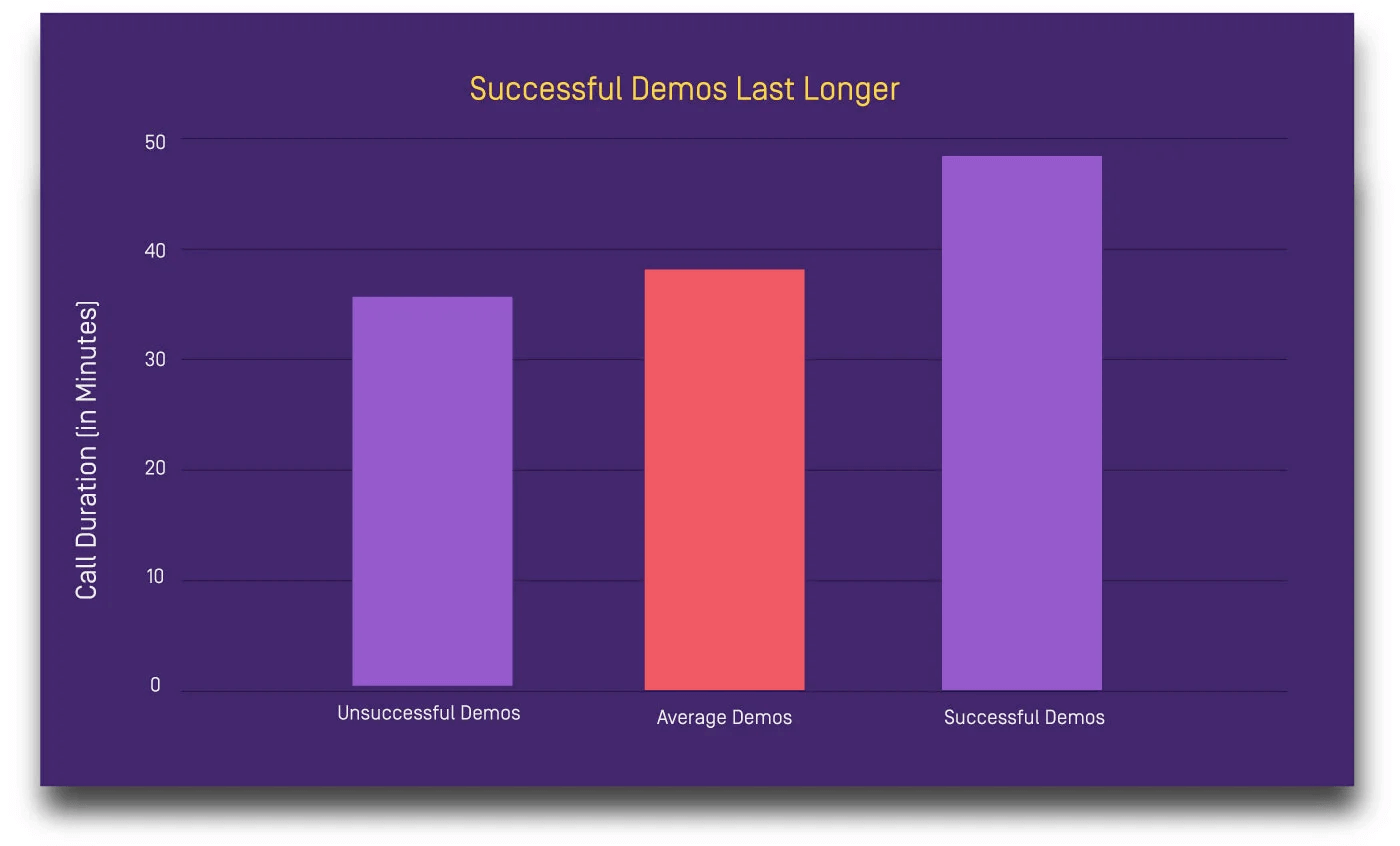
Our research shows successful demo calls last 30.5% longer than unsuccessful demos and are more than 45 minutes.
Use sales tools
Sales tools can be used to improve efficiency at every stage of the sales process. Things like a CRM and high-quality prospect data should be a given.
But don’t rule out in-depth analytics platforms or revenue intelligence tools that can analyze all customer-facing interactions and provide the insights your reps need to close deals faster. A tool like Gong can also improve internal processes. Our client Addepar , for example, used Gong to increase onboarding and internal transition speed by 60%.
Improve your sales efficiency with Gong
Sales efficiency is an easy formula to understand. But calculating it is only the beginning. To drive real value, sales managers must work on improving their sales process to reduce costs and drive more revenue.
Gong can be an effective tool in your quest to increase efficiency. It can analyze customer-facing interactions and deliver the insights needed by your team to get more deals across the line. Request a demo today to find out how Gong’s customer retention management software can improve your sales efficiency.

Content Author
Jonathan Costet is the Senior Director of Revenue Marketing at Wiz. Before this, he was Senior Manager, Growth Marketing at Gong, where he played a crucial role in driving demand generation through data-driven strategies. At Gong, Jonathan harnessed the power of revenue intelligence to craft effective messaging, improve customer retention, and optimize sales forecasting. He was instrumental in using Gong's platform to unlock insights that helped target the right buyers and maximize marketing efficiency.
Discover more from Gong
Check out the latest product information, executive insights, and selling tips and tricks, all on the Gong blog.



